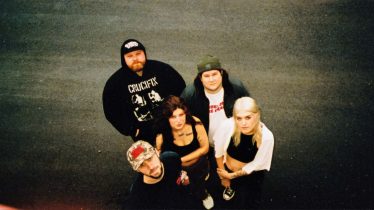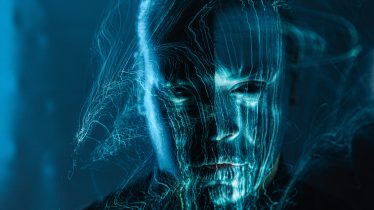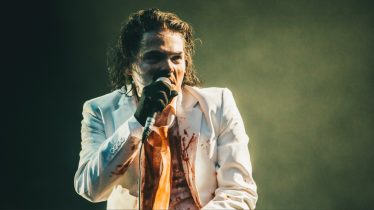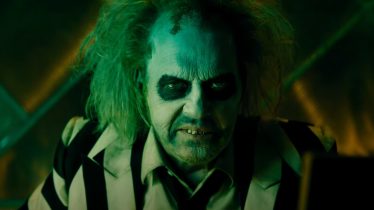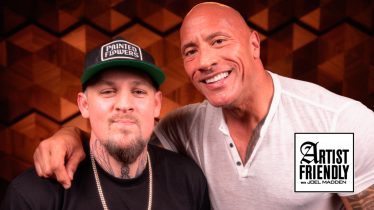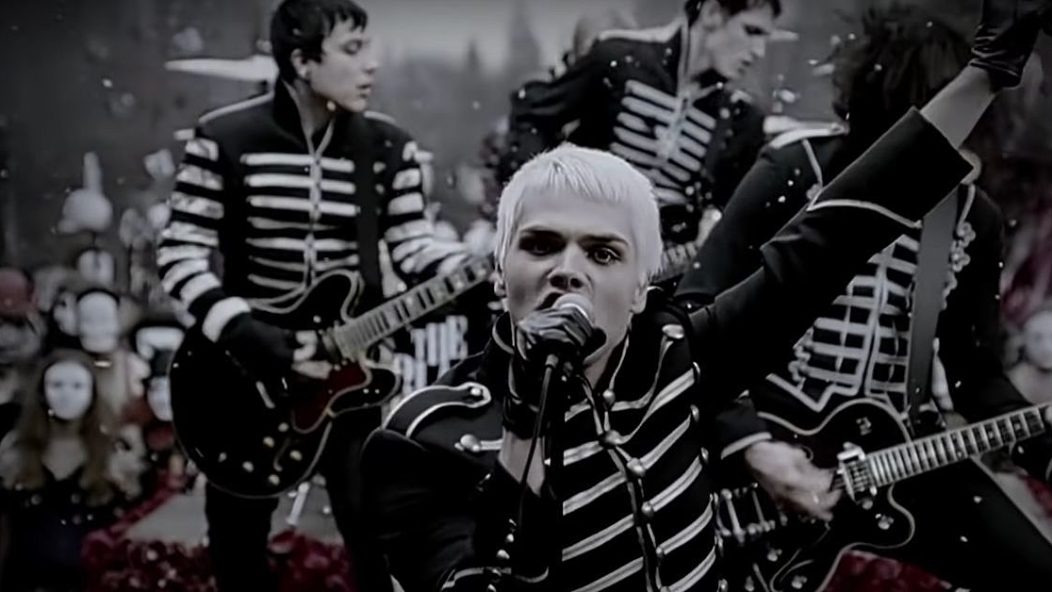
The best punk albums of 2006, from My Chemical Romance to +44
In 2006, punk rock was gleefully dancing around a paper shredder as it fed page after page of its own rule book through the blades. Punk had become the primary urban social protest folk music for misfits, but over the years it had become calcified, conservative and orthodox, musically. True, the greatest punk bands had always been rulebreakers, such as Black Flag growing their hair and getting slower and heavier as their audience shaved their heads and yelled, “Faster! Harder!”
Read more: Calling all emos: Paramore will make their glorious live return this fall
Though there were bracing blasts of classic old-school punk rock through the year, including the return of one of the form’s founding fathers, 2006’s most incandescent punk albums didn’t care for standard regulation anything. Why strictly adhere to any shopworn format? The important factor is the spirit and the ideas you bring as you strap on your Gibson or sit behind your Ludwigs. Do you have the rebel spirit? Is your overdrive pedal set to “fuck off”? Are you challenging everyone’s notions, including your own? Then it’s punk, whether you’re composing an emo opera or your lead instrument is a ukulele. These 15 albums defined the punk spirit as they defied its orthodoxy.
My Chemical Romance – The Black Parade
Leave it to My Chemical Romance, the genius millennial mashup of Misfits and Queen, to create their most joyous, life-affirming music in a concept album about a cancer patient dying. Gerard Way and crew’s enormous sense of drama and dark sense of humor were given full command of the ship’s steering wheel, and the result is The Black Parade. It possessed the most grandiose musical reach of any MCR album. MCR swung for the rafters, and the outfield couldn’t catch the ball. It’s still going around the world. TBP was as grandiose as having a parade horn section marching through a section of “Dead!” and a Liza Minnelli cameo in the thick of “Mama.” And it was morbidly funny, singing about being “soggy from the chemo” (“Cancer”), or how hell turned out to not be so bad, aside from the odor (“Mama”). It became one of the defining musical works of the 2000s, and the biggest album of their career, selling 3 million copies in the U.S. alone by 2018.
Anti-Flag – For Blood And Empire
“If you don’t write good music, people aren’t going to listen to anything you say,” Anti-Flag singer/guitarist Justin Sane told The Guardian in explaining signing with major label RCA. Writing good songs was never a problem for the hard-left Pittsburgh political punks, as they’d always tempered their heavy Clash influence with the standard pop-punk toolkit. Now they inked a two-album deal with the album that brought Elvis Presley and David Bowie to the world. “They were willing to give us complete control over what we record, the artwork, who we tour with,” Sane continued. “We won’t be censored.” To test the limits of their new contract, Anti-Flag handed in (for the first in their two-album deal) an anti-war song cycle, For Blood And Empire.
Gallows – Orchestra Of Wolves
Bursting free of Watford, Hertfordshire, England in 2005, U.K. hardcore firebrands Gallows were the most intense sonic and emotional expression of 2006. Orchestra Of Wolves tracks such as “Abandon Ship” and “In The Belly Of A Shark” came off as one long scream, with Frank Carter leaving large bloody chunks of throat flesh on the microphone. This, their debut album, was the most cathartic piece of music to be released this year. It still ripples with intensity.
The Living End – State Of Emergency
The Living End, Australia’s premier rockabilly-damaged punk rockers, road-tested the material they’d written for fourth LP State Of Emergency at a series of gigs billed as “the Longnecks.” One such show was at the huge Splendor In The Grass festival the day before they began tracking, the theory being a positive reaction would fuel a good record. Much of this is rather downbeat in mood, with most of the material written in minor keys. Which didn’t preclude big choruses from exploding out of tracks such as “Wake Up.” It created one of the strongest albums in the trio’s catalog.
Fucked Up – Hidden World
Hidden World is the debut album from Fucked Up, a Toronto five-piece who might be the most progressive hardcore band in history. It was their first proper studio full-length, after a series of singles and EPs demonstrated their artistic breadth and ambition. The title track to their Looking For Gold EP alone says a lot: 16 minutes containing 18 layers of guitars, a three-minute drum solo and five minutes of whistling. Hidden World was the best possible long-form introduction to Fucked Up’s wonderful and frightening world. It was over an hour of high-energy punk metal that never sacrificed melody for obliterating crunch, topped by singer Damian Abraham’s erudite scream. Most tracks went well past the five-minute mark, with “Vivian Girls” going a full trance-inducing nine-and-a-half minutes.
+44 – When Your Heart Stops Beating
blink-182 announced an “indefinite hiatus” after rehearsals for a planned appearance at the Music For Relief: Rebuilding South Asia tsunami benefit fell apart in acrimony. Leader Tom DeLonge was increasingly disenchanted with the band’s creative trajectory as he grew older and began raising a family. He’d toyed with darker themes on his Box Car Racer side project. Now he had the freedom to give these more mature notions full rein. Meanwhile, bassist/singer Mark Hoppus immediately enlisted blink’s secret weapon Travis Barker to bring his impeccable drum skills to a new band. What began as an experimental electronic duo soon evolved into a fully organic band with the addition of the Nervous Return’s Shane Gallagher and Mercy Killers’ Craig Fairbaugh to split guitar duties. The band were named +44 after England’s international dialing code. The emergent debut (and thus far, only) album When Your Heart Stops Beating also skewed darker than blink, with a brace of minor-key rockers featuring subliminal electro/new-wave touches. A strong, worthy record, it would have been interesting to see further development.
Some Girls – Heaven’s Pregnant Teens
From a pop-punk supergroup to a modern hardcore supergroup: Some Girls evolved a 2002 conversation between singer Wes Eisold (American Nightmare, Give Up The Ghost, Cold Cave) and guitarist Rob Moran (Unbroken, Narrows, Over My Dead Body). The idea? Start a hardcore band whose sole purpose was to “fuck people up.” Toward that end, they couldn’t have found a better collaborator than bassist Justin Pearson (The Locust). Their prime directive for Heaven’s Pregnant Teens, their sole studio full-length? “With this record, we wanted to depart from traditional chord changes and time signatures and create something that doesn’t fit into an easily consumable format,” guitarist Chuck Rowell said. The result was one long scream over skittering free-jazz rhythms and guitars that sounded more like sequencers gone haywire, or battering rams. Yeah, that good.
The Bronx – The Bronx (II)
Though they were signed to Island Def Jam after their 12th gig in 2002, Los Angeles scream-punk extremists the Bronx opted for a few years’ apprenticeship on their own indie label White Drugs. By the time they offered their major-label bosses their second eponymous LP, they’d evolved into a potent, brutal mix of punk and hard rock, with all the bone-crushing power of Black Flag and the rock ‘n’ roll swagger of Guns N’ Roses. Spinning off singles such as “Shitty Future,” “History’s Stranglers” and “White Guilt” (the latter featuring GNR’s Gilby Clarke, who’d produced the first Bronx LP), The Bronx (II) was one of the most powerful bursts of aggressive rock ‘n’ roll all year. It separated itself from the rest of the year’s hour-long screams by dint of its tunefulness and trad-rock swagger.
The King Blues– Under The Fog
And in a year determined to blow apart every page in the punk-rock rule book, London’s the King Blues were the least likely act of them all. Yet, their uniqueness made them the most punk band of the year. Led by singer Jonny “Itch” Fox and his power-chord ukulele, the King Blues were virtually all acoustic, like hopped-up buskers mashing up reggae, ska, dub, folk, hip-hop and Clash-style punk on a tube station platform as passersby dropped pound notes into their open guitar cases. Under The Fog was startling in its simultaneous ferocity and subtlety, with tracks such as “Come Fi Di Youth” revitalizing street-wise rebel music in ways others were incapable or unwilling to try.
Mission Of Burma – The Obliterati
Mission Of Burma, whose best capsule description might be “an art-punk Clash featuring some mad genius performing tape-loop manipulations at the mixing board,” reformed to near-universal huzzahs in 2002. Their original tape-loop wizard Martin Swope declined to reenter the fray, so the band enlisted Shellac’s Bob Weston (who’d been a member of MoB drummer Peter Prescott’s Volcano Suns) to mess with the reel-to-reel decks. After a successful studio reinvigoration entitled ONoffON, the intentions for the follow-up were very different. The Obliterati was classic Burma in that no song followed any template and could careen off in any given direction while being identifiably Burmese.
The Bouncing Souls – The Gold Record
The Bouncing Souls are so punk, they’re named for the Dr. Martens advertising slogan (“with Bouncing Soles”). Across their 33-year history, they’ve honed and refined a unique brand of punk rock that’s melodic but not pop punk. It’s still raw and aggressive for all its tunefulness. Seventh studio release The Gold Record contained some unique wrinkles to the usual loud ‘n’ fast singalongs, such as the anthemic “Sarah Saturday.” The specter of Bruce Springsteen hangs heavily over a number of songs, especially “So Jersey,” with its dramatic arrangement, sky-punching chorus and strong lashings of piano and organ. For that matter, “The Pizza Song,” with its epic “let’s get out of this small town” storyline and wash of acoustic guitars and accordion, comes straight out of the Boss’ playbook. It was as if the Bouncing Souls were paving the path for fellow Clash-meets-Springsteen Jerseyites the Gaslight Anthem‘s emergence a few years hence.
New York Dolls – One Day It Will Please Us To Remember Even This
What year was it? In 2004, three of punk’s founding fathers — sleaze/glam/trash pioneers New York Dolls, slash-and-burn R&B destruction merchants the Stooges and the scene’s original loud-and-fast political conscience MC5 — hit the live circuit in new lineups featuring some original members like it was 1972 all over again. And while none displayed diminished rock ‘n’ roll power, much to their now-multigenerational audiences’ delight, it remained to be seen if they could write new material within a hair of their respective gold standards. The Dolls were first out of the gate with One Day It Will Please Us to Remember Even This, helmed by original Dolls David Johansen and Syl Sylvain. Joined in their millennial lineup by ex-Hanoi Rocks bassist Sami Yaffa, who was born to be a Doll, plus guitarist Steve Conte, drummer Brian Delaney and keyboardist Brian Koonin, it was a solid raunch ‘n’ roll set from guys who helped invent the form. Johansen growled with a nicotine-cured rasp, as Sylvain and Conte twisted their guitars around each other in shapes similar to the old Sylvain/Johnny Thunders dogfights of yore.
The Riverboat Gamblers – To The Confusion Of Our Enemies
Texas’ high-flying garage/raunch rockers spent the first few months of 2005 dropping jaws on Flogging Molly’s tour. Then they performed like an atom bomb landing in a daisy patch on that summer’s Warped Tour. Skatewear designers Volcom, like almost anyone encountering the Gamblers’ high-voltage live show, had their jaws sufficiently dropped. They inked the band to their new Volcom Entertainment label, paving the way for 2006’s To The Confusion Of Our Enemies. Boasting a cleaned-up production from Andrew Murdock (aka “Mudrock”), Confusion allowed all the Gamblers’ live fury, precision musicianship and high-flying spirit to shine through.
The Applicators – My Weapon
The Applicators, the raw feminist pop-punk outfit from Austin, formed in 1999 and caught the ears of a British rock press then infatuated with garage-centric American sounds. By their third studio full-length, My Weapon, they’d refined continuously without losing any anger or edge. Recorded with ex-Sixteen Deluxe guitarist Chris “Frenchie” Smith at his Austin facility The Bubble, he gave them enough radio-friendly sheen that they should have been bopping in on TRL to discuss third-wave feminism and their favorite Misfits B-sides with Carson Daly. Plus you gotta love any punk band that have a friend guest on cello on a track.
The Briggs – Back To Higher Ground
Premier street-punk outfit the Briggs — led by brothers Jason LaRocca and Joey LaRocca on guitars and vocals — initially burst from Los Angeles in 1999. It seemed the whole world knew about them almost immediately. From 2001 to 2008, they produced four solid LPs’ worth of their Clash-meets-pop-punk meld, with occasional lashings of Celtic music. Back To Higher Ground was their third studio album, produced by Joe Gittleman. It was as sturdy and loud as any of their records, with the track “Harder To Stand” gracing the soundtrack of Rob Schneider’s 2007 film Big Stan.

